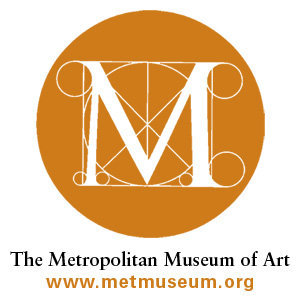Radiance from the Rain Forest
dal 24/2/2008 al 31/8/2008
Segnalato da
24/2/2008
Radiance from the Rain Forest
Metropolitan Museum of Art - MET, New York
Featherwork in Ancient Peru

An unprecedented exhibition of luxury items from ancient Peru, embellished with brilliantly colored feathers of Amazonian rainforest birds, will go on view at The Metropolitan Museum of Art on February 26. Bringing together more than 70 works from public and private collections in the United States and the Metropolitan's own holdings – many of which have never been displayed before – Radiance from the Rain Forest: Featherwork in Ancient Peru will explore the more than 2,000-year-old tradition of sophisticated feather-working that prospered in ancient Peru.
Ancient Peruvian featherworks are a little known art form even among those who appreciate the extraordinary textile arts of Precolumbian Peru, and little consideration is awarded to them in the archaeological literature. Well-preserved works are rare because of the extremely fragile nature of feathers – organic materials such as feathers do not survive burial well – and only occasionally are examples included in exhibitions on Precolumbian art from Peru. This exhibition is the first in an American art museum to focus exclusively on these delicate works.
Highly valued for their vibrant colors and silken texture, feathers are known from ritual contexts in Peru from as early as the third millennium B.C. and served various ceremonial and secular purposes throughout pre-conquest Peruvian history. The rainforests of the Amazonian basin, to the east of the Andes, were the source of most of the birds. Feathers of different bird species (chief among them, parrots and macaws) were used for the purpose of adornment and ritual.
A few works in the exhibition date from a couple of centuries before and after the beginning of the current era, but most were made between the seventh and the 16th century, when trade in luxury materials flourished and feather-working techniques were well established. On view will be high-status personal ornaments such as earspools and pectorals covered with the finest feather mosaic in radiant blues, yellows, reds, and greens; ceremonial garments with striking geometric designs, grand headdresses; and elegant accessories such as plumes and fans. Ritual items will be represented by miniatures in silver and wood decorated with feathers, small cloth figurines wearing feathered miniature garments, and headdresses the Nasca and Inka peoples made as offerings to their gods and honored dead.
An additional display of impressive feathered textiles from the Metropolitan's collection will be on view in the textile cases located in the adjacent South American gallery.
The exhibition will be accompanied by a range of education programs, including gallery talks by curator Heidi King and museum educator Amy Silva, a "Look Again!" family program on March 15, the screening of a documentary film, and upon request, Community and Workplace programs. Other programs will also be featured on the Museum's Web site at www.metmuseum.org.
The exhibition is organized by Heidi King, Senior Research Associate of the Department of the Arts of Africa, Oceania, and the Americas. The exhibition will be featured on the Museum's Web site at www.metmuseum.org.
Press preview: Monday, February 25, 10:00 a.m. – noon
Metropolitan Museum
1000 Fifth Avenue at 82nd Street - New York



